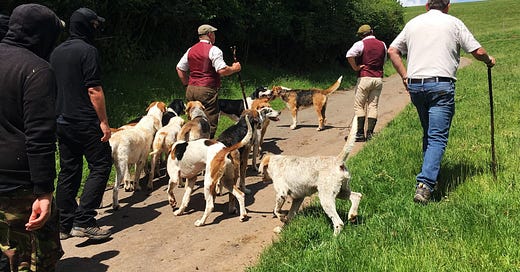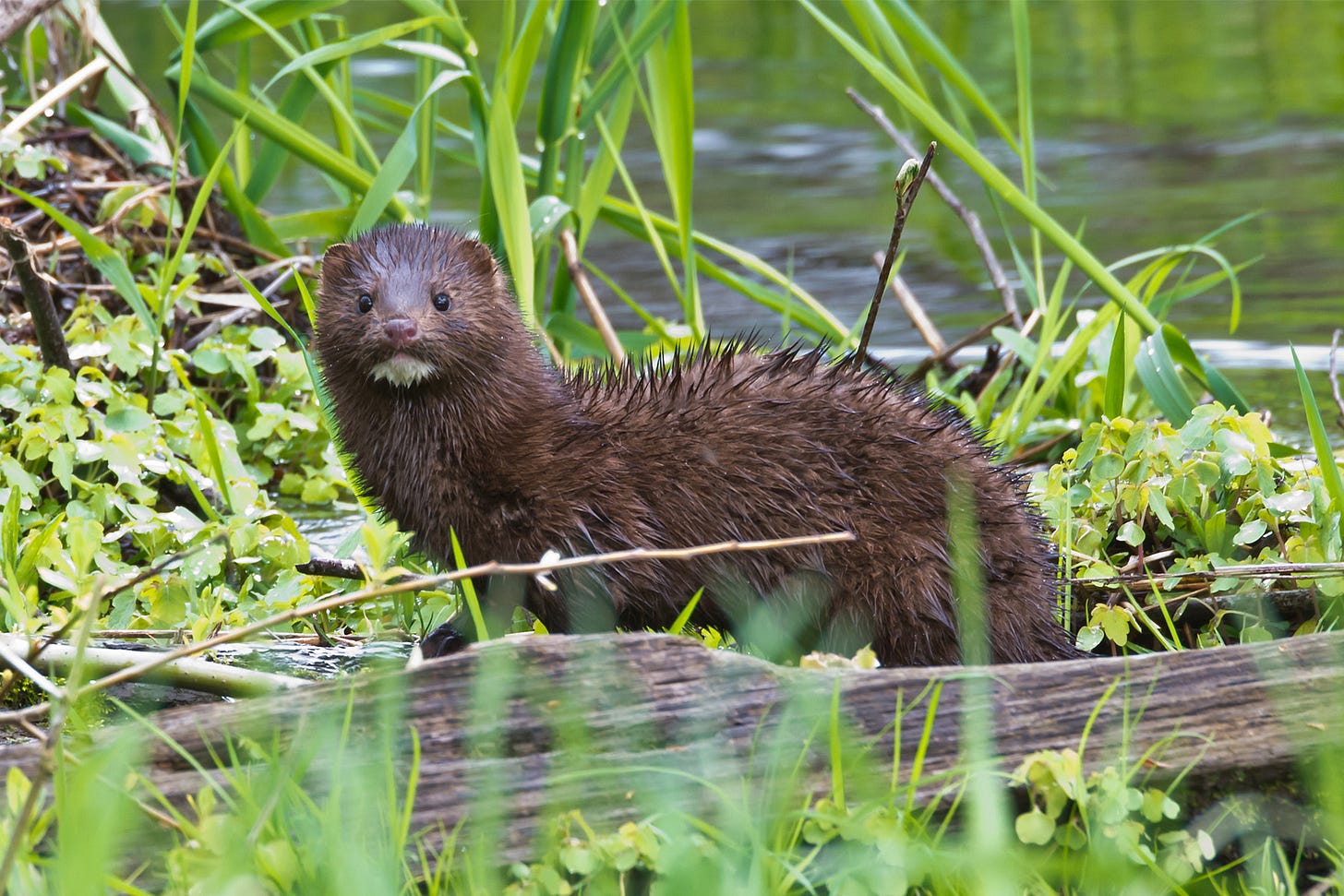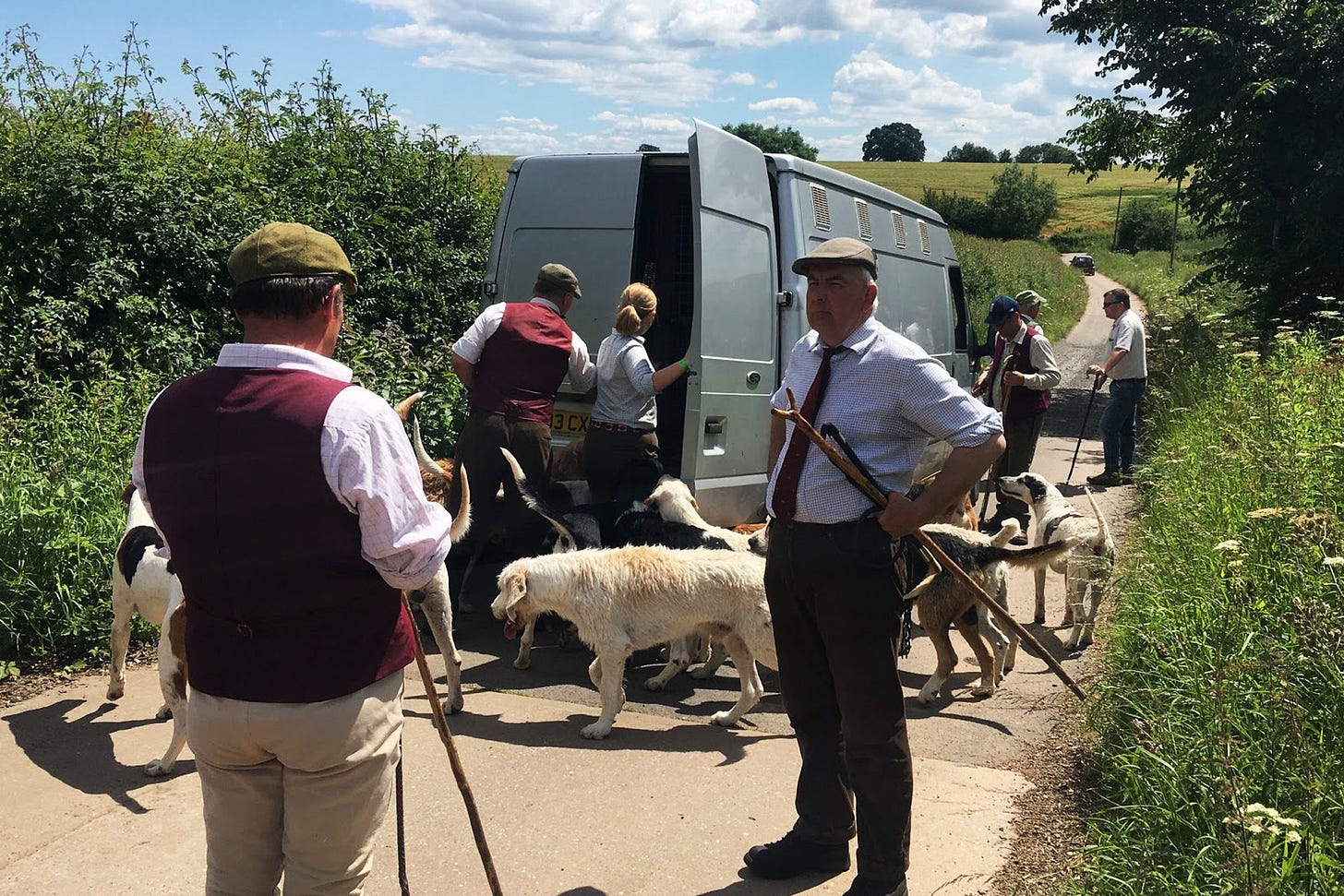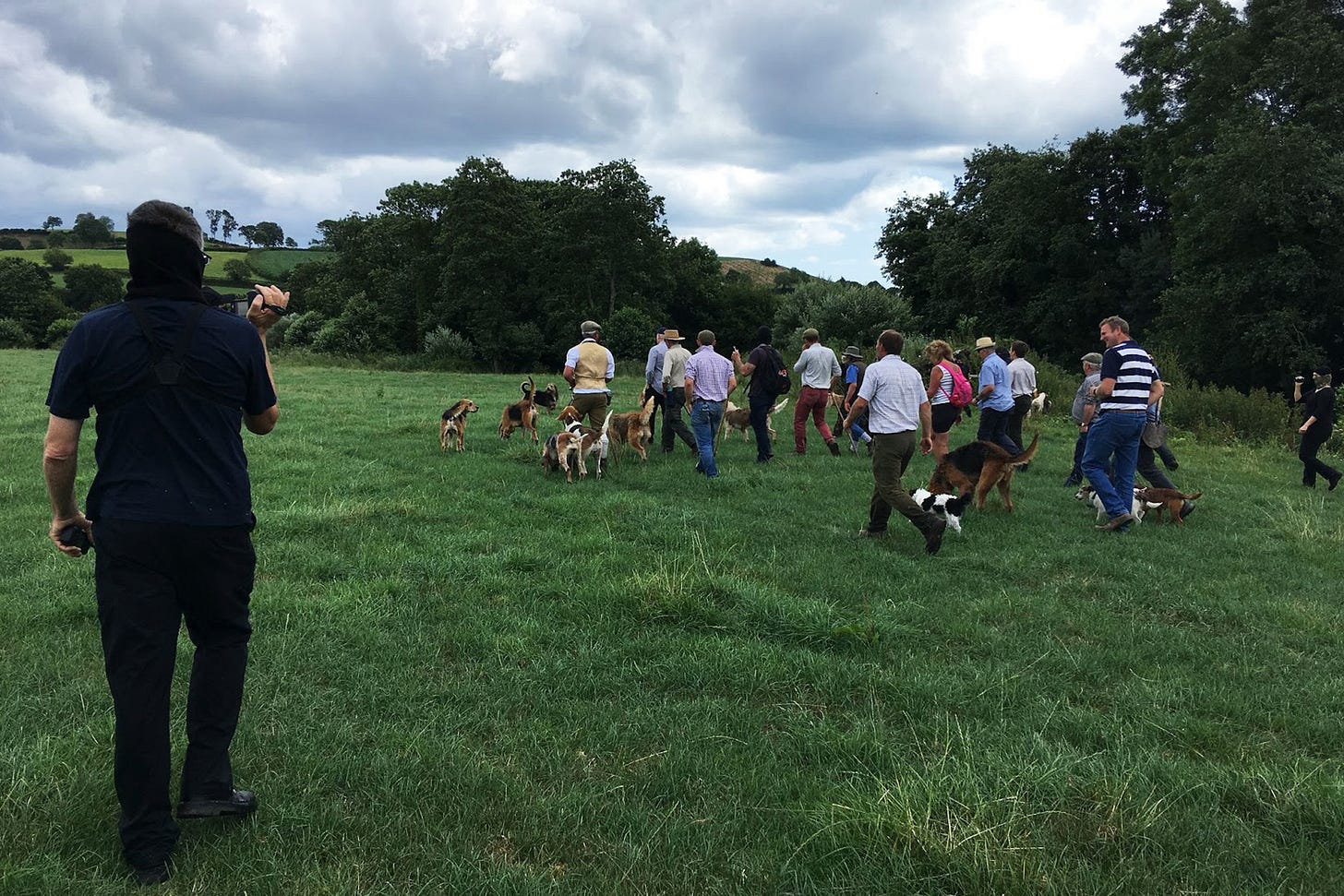Spring is here and summer is on the way, which means the end of the typical fox and hare hunting season in the UK. Unfortunately, it also means the beginning of the mink hunting season.
Running from approximately April to October, mink hunting takes place in and around rivers and streams across the country. Like all hunting of mammals with dogs, mink hunting is illegal as per the Hunting Act 2004, but countless monitors, hunt saboteurs, and wildlife activists believe it continues regardless.
We spoke to a member of Bristol Hunt Saboteurs about their time with mink hunts over the past few years to find out exactly what this summer bloodsport looks like today.
What are mink, and why are they hunted?
Mink are semi-aquatic mammals similar to weasels, ferrets, and otters. The variety we have in the UK are descended from American mink, originally brought over for fur farming in the 1920s. They became particularly widespread in the wild in the latter half of the 20th century.
Contrary to popular belief, which frequently cites animal liberation actions of the 1990s as responsible for the abundance of mink in our countryside, the non-native population likely took hold following inevitable escapes - and intentional releases - from fur farms.
According to the Game & Wildlife Conservation Trust, mink were actually confirmed to be breeding in the wild as early as 1956. They then became the primary target of otter hunts in the 1970s after their fellow mustelidae experienced significantly declining populations.
One likely cause of this fall in otter numbers was the presence of potent insecticides such as dieldrin and aldrin in the natural environment (as covered by Reuters here). Though otter hunting undoubtedly contributed to the falling numbers in some way.
So following a nationwide ban on otter hunting in 1978, hunts set their sights on the physically and behaviourally similar mink, which provided the additional smokescreen of controlling the population of an invasive species. While they may appear alike, American mink are smaller, darker, and far more likely to be spotted than the elusive river otter.
Bristol Hunt Sabs told The Citro that mink hunts:
claim that by hunting mink they help water voles and aid conservation efforts, however their riverside destruction with boots, spades and poles damages the fragile riparian habitat, home to a diverse range of species including the water vole.
They added that some people believe packs have now reverted to hunting otter following the decimation of the mink population, but that it is likely some never stopped.
At the very least, hunts do operate in areas with known otter populations, and saboteurs have documented this. So even after switching to mink, it is proven that these hunts continue to be responsible for so-called ‘accidental’ otter deaths.
According to the League Against Cruel Sports (LACS), there are approximately 17 registered mink hunts in England and Wales alone. While the Hunt Saboteurs Association estimates that there are at least 20 additional, unregistered hunts in existence that hunt through the summer.
What actually happens on a mink hunt?
Bristol Hunt Sabs told The Citro:
Mink hunting is different to fox and hare hunting in a number of ways. Besides the basic premise being the same - a pack of scent hounds pursuing and killing their quarry (the intended, hunted animal) and some of the structures being similar, mink hunting takes place in the water - along rivers, streams and lakes.
Huntsman, terrierman, and other staff follow the hounds on foot as they walk, wade, and swim along riverbanks where both mink and otters nest. Mink packs include approximately 12 to 16 hounds, and former otter packs often keep more pure-bred otter hounds than other breeds.
Foxhounds and labrador-foxhound crosses are also commonplace, and, as in fox hunting, terriers are used to flush out the hunted animal if and when they go to ground. Whereas otters can require a variable and expansive range, mink have relatively small territories of less than a single mile of riverbank. As a result, they tend not to run long distances to escape huntsman and hounds.
According to the Hunt Saboteurs Association, followers of the hunt frequently carry five-to-six foot long “otterpoles,” used as walking sticks and to disturb the hunted animal if it has taken refuge amongst roots, weeds, or other flora. (More recently, these have also been used to attack monitors and sabs).
While otters are better swimmers, mink are sometimes able to escape by hiding in smaller holes or climbing up trees. When caught, mink are typically killed by the hounds or terriers, with sticks and spades, or by drowning. And because they breed in February and March, there is a high chance of entire litters of young being killed, too.
Mink typically give birth to a litter of one to eight kits, which are dependent on their mother for at least the first six weeks. So even if they are not killed by the pack, orphaned mink will likely starve to death following a successful hunt. Some packs will kill several mink in a single day.
Mink hunts are typically accompanied by terriermen with dogs and spades to help dig out hunted animals, as with fox and hare hunts. They typically go out around twice per week, often on a Wednesday and a Saturday, also like other forms of hunting. Bank holidays (particularly May and August) are key dates, and frequently involve joint meets and other celebrations. A leisurely pace is standard, and lunchtime picnics or pub stops are common.
How do you sab a mink hunt?
Mink hunts are typically more elusive than fox hunts with smaller numbers and unpublicized meets. This can make them hard to find, but sabs have had increasing success over the past few years thanks to their working knowledge of the hunts - distinctive vehicles, favoured meets, and kennel locations — along with anonymous tip-offs from members of the public.
Due to the relatively small number of active mink hunts, they can also be found across huge areas of the country, sometimes spanning several counties and the territories of dozens of fox hunts. When hunt saboteurs and monitors do visit these hunts, their reports frequently include violence on the part of the hunt staff (particularly when caught hunting otters).
Bristol Hunt Sabs explained:
It’s often a case of turning up and being present. Mink hunts don’t like the attention, and many will pack up at the sight of sabs with cameras. Some will turn to violence, as we often see with frustrated hunts who don’t want sabs ruining their day of hunting. Others will try to continue hunting, so sabs need to be prepared for that eventuality.
But other than the different surroundings, many of the tactics employed by saboteurs are the same ones used to disrupt illegal fox and hare hunting: getting between the hounds and the hunted animal, foiling their scent, and using voice calls and whip cracks to halt or call off the pack.
Bristol Hunt Sabs added:
For too long hunters have seen the summer as an opportunity to enjoy their bloodsports with little public attention and with little opposition. Along with many other groups and the HSA, we’re changing that. As we say: if you hunt, expect us!
If you see mink hunting in your area, you can report this to a local hunt sab group via their social media page or email, while the Hunt Saboteurs Association has a tip-off line posted on their website here.
Want to support The Citro? Click here to contribute.
Headline image and body images except the mink photo via Bristol Hunt Saboteurs






